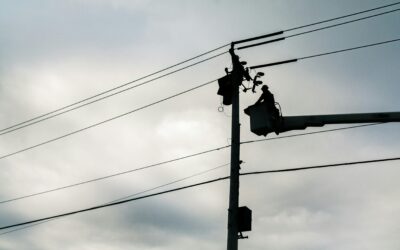“This article was originally published by Mark Beauchamp on Hometown Connections on November 8, 2021. https://www.hometownconnections.com/news/direction-for-a-new-age-in-energy/ “
Ten years ago, a lot of questions and uncertainty clouded our vision of the future for the electric industry. We wondered about the shift away from coal generating resources, the place of natural gas in our supply mix, and the cost shift for highly demanded renewable resources. Electric Vehicles had barely penetrated the automotive markets and battery storage technology was far from utility scale. Though not all these questions have been answered, time has helped to clear some uncertainty and has provided direction within our vastly changing industry.
Electrification and Price Signaling Opportunities
Today, we see the retirement of coal plants, increased investment in alternative generation resources such as natural gas fired combined cycle turbines, cost decreases for wind and solar generation, increased and growing market share for electric vehicles, and progress for battery storage technology.
However, with this improved clarity and direction, our industry faces additional opportunities, changes, and challenges. We must first understand key utility characteristics in order to properly navigate increasing complexities.
Load Factor is a measurement of how efficiently a customer uses the electric infrastructure that is in place for them. An improved load factor can reduce capacity needs in the distribution system and lower power supply costs, creating a win-win for the customer and utility.Consider a utility with a wholesale power supply demand charge of $14.00/kW and an energy rate of $0.04/kWh with a 65% load factor. A 5.0% improvement in load factor would reduce power supply costs by 3.0% and a 10% improvement would reduce power supply costs by 5.6%.
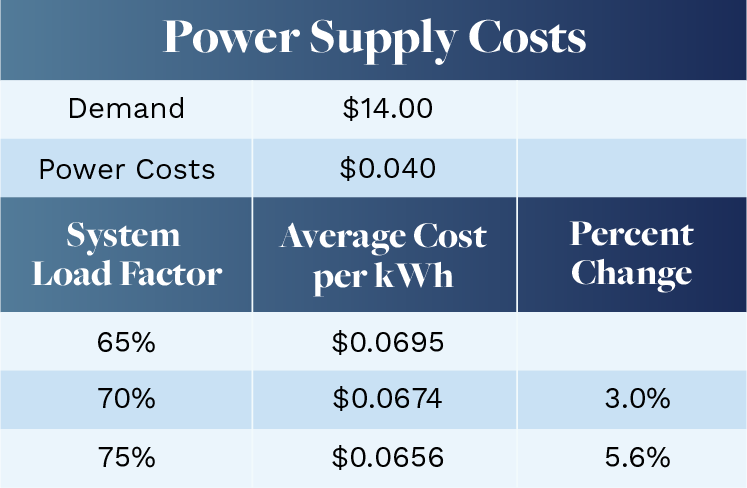
Additional efficiencies could occur on the sub-transmission and distribution systems when the infrastructure is used more consistently throughout the day.
Considering load factor as it relates to industry change begs the question of where a utility can maximize this potential. We foresee a large contributor to be electric vehicles. A residential EV charging station can improve the system load factor. This occurs if the EV customer charges at night during off-peak hours when they would otherwise not be using the infrastructure. Bloomberg New Energy Finance predicts that the market share for electric vehicles will reach 40% by 2030.
Apart from improved load factors, what does this mean for the utility?
If the market information proves true, this will mean increased energy (kWh) sales in the residential sector. The 2020 Tesla Model 3 can go one mile on 0.26 kWh. The average residential driver travels 1,200 miles per month, which equates to approximately 312 additional kWh sales/month per vehicle.
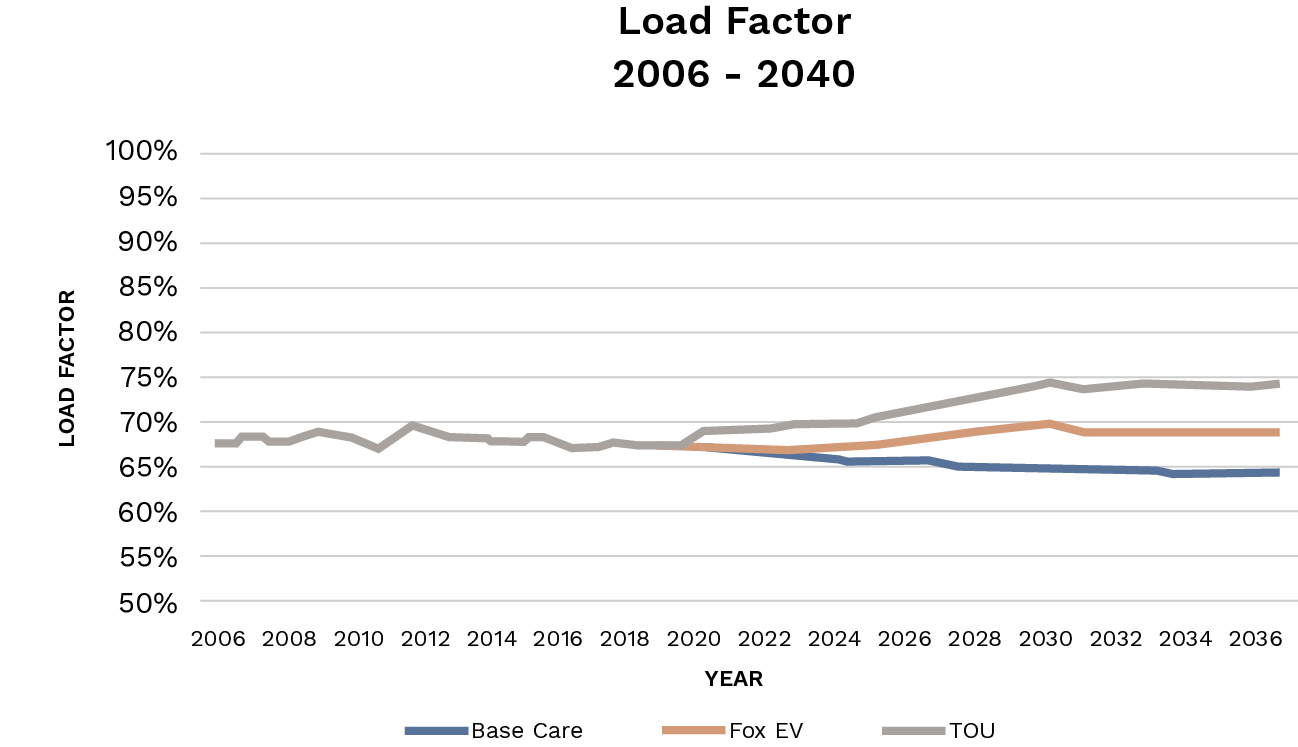
Considering the prediction in market share of 40%, coupled with the average increase in kWh sales, we estimate electric vehicles to improve system load factor anywhere from 1% – 5% over the next twenty years. The graph to the left depicts projected change in load factors for a utility that implemented time-of-use-rates, coupled with projected market penetration of electric vehicles. The utility’s system load factors are projected to improve from 67% in 2020 to 75% in 2038.
Electric vehicles, despite the positive effect on system load factors and residential energy sales, are not without future challenges. When considering commercial charging, utilities must ask themselves if they have the proper infrastructure in place to properly serve potential load. Level 2 charging stations use anywhere from 7 kW – 19.2 kW which forces consideration of additional transformer capacity. Fast charging stations such as a Level 3 can exceed 250 kW per port. Bearing in mind that many have 8 ports in a single charging station, there is potential to accommodate a 2 MW demand. This would not only force the need for additional transformer capacity, but substation capacity, and subsequent distribution system improvements.
The impacts of technological improvements on system load factor are dependent on each utility’s load profile. For example, customer installed solar generation may improve the system load factors for utilities that peak in the afternoon, but solar combined with batteries would be needed to reduce peak demands if peaks occur in the early evening. The graph below identifies each technology and its impact on reducing peak demands or improving system load factors.
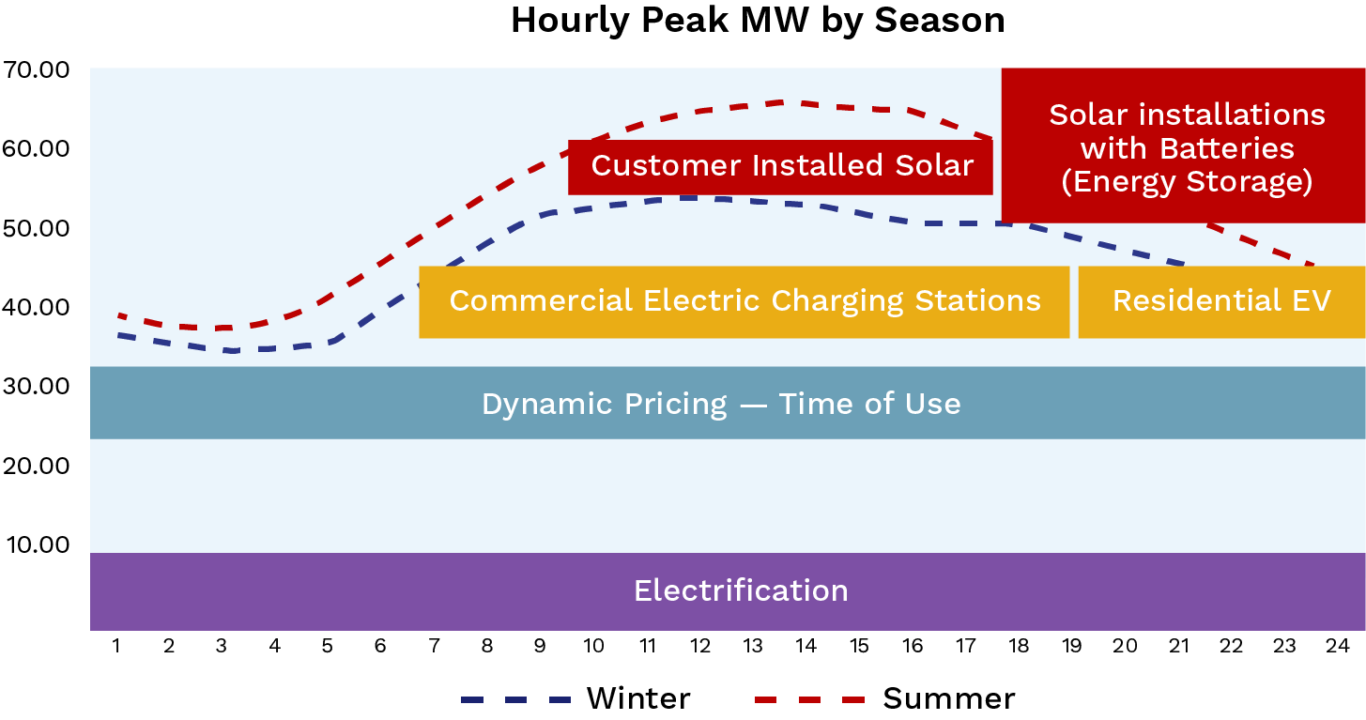
Commercial electric vehicle charging stations currently have average load factors below 10%, however, general service rate tariffs were established for classes with load factors above 40%. Therefore, it is important for utilities to consider developing specific, cost-based rates for commercial charging stations based on the projected usage pattern.
Further, the electrification of buildings is being promoted in many states to reduce the use of natural gas. Four states (New York, California, Washington, Massachusetts) have a ban on natural gas extension into new building construction. The increased use of electricity for heating can have varying effects on system load factors depending on weather patterns, and therefore electrification affects are not a one size fits all. Utilities need to examine their community’s use of electric heat and establish rates with proper price signals to ensure they make the most efficient use of this growth opportunity.
Price signals are an important tool for utilities to economically communicate with customers. Implementing rates that customers understand and that provide incentives to save money is key to improving utility characteristics like load factor and reducing utility costs. Unfortunately, many utilities have not implemented customer rates that reflect the varying costs of power supply, thus not taking advantage of cost saving opportunities. In the graph below, the orange and blue lines show the time-of-day power supply cost in the summer and winter, respectively. The grey line depicts the fixed rate charged to customers throughout the day.
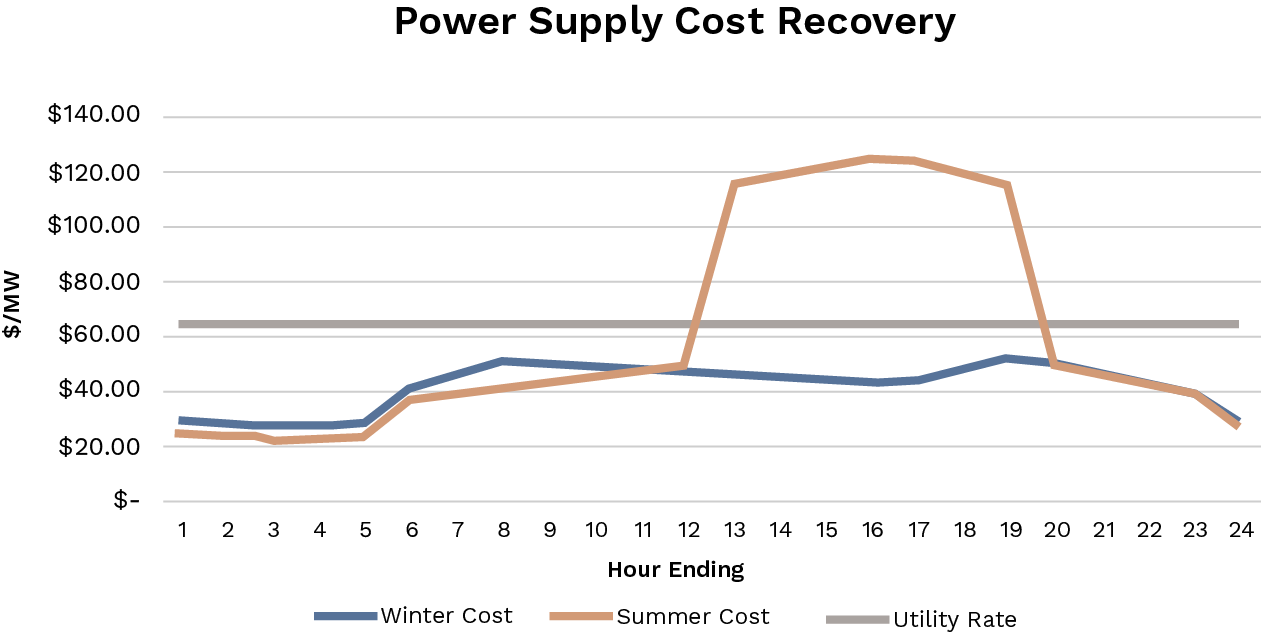
Utilities have an opportunity to send price signals to customers that will reduce the peak demands on the system and shift the usage to lower cost time-periods. In 2019, 71% of residential customers in the United States had AMI metering and 13% of those utilities offered residential time of use rates. Customer response to these price signals vary, but we have found that a two times price differential ($0.20 for on-peak, $0.10 for off-peak) between time-period pricing will reduce customer usage during peak hours between 5% and 10%. This provides the customer an opportunity to reduce their electric bill and the utility an opportunity to save on power supply costs. This win-win cannot occur without proper technology in place and establishment of appropriate price signals.
Improved Utility Margins and Lower Costs for Customers
In summary, sales growth combined with a limited need to expand infrastructure will improve a utility’s margin and lower costs for its customers. Since electric rates include recovery for fixed costs, increases in variable energy sales equates to additional revenue to repair and replace the same infrastructure, and potentially lower rates for existing customers.
Be it five, ten, or twenty years from today, electrification of buildings, and residential and commercial charging will become a part of our average use. Combining these changes with time-based rates, utilities can have improved utilization of infrastructure, a positive effect on power supply cost, and a win-win for the customer and the utility.
